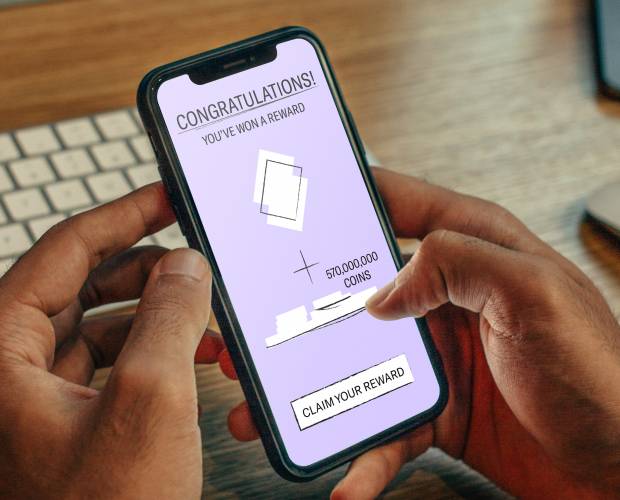Oren Glanz, CEO of Service Adoption Management company Olista, offers advice to mobile operators on improving the mobile music experience and increasing user satisfaction with mobile data services
 Music fans have always been proud of their collections, but whereas in the past they might have measured their massive vinyl collections in meters, gigabytes are now a better means of comparison. Statistics from the International Federation of the Phonographic Industrys 2007 Digital Music Report demonstrate this, showing an estimated $2 billion worth of music being sold online or through mobile phones in 2006, accounting for 10% of music sales. Strategy Analytics forecast for Western Europe shows that in 2006 there were almost 1 million active mobile music users and it continues by predicting that by 2010 this figure will have risen to 2.5 million users, which has made mobile operators take note and place even more faith in the mobile delivery channel.
Music fans have always been proud of their collections, but whereas in the past they might have measured their massive vinyl collections in meters, gigabytes are now a better means of comparison. Statistics from the International Federation of the Phonographic Industrys 2007 Digital Music Report demonstrate this, showing an estimated $2 billion worth of music being sold online or through mobile phones in 2006, accounting for 10% of music sales. Strategy Analytics forecast for Western Europe shows that in 2006 there were almost 1 million active mobile music users and it continues by predicting that by 2010 this figure will have risen to 2.5 million users, which has made mobile operators take note and place even more faith in the mobile delivery channel.
Download addicts
Usage and interest in mobile music is clearly exploding, so how can
operators ensure their subscribers become addicted to downloading music?
With so many devices on the market, there is the potential for mobile
music users to be quick to churn when a service or device doesnt live
up to their expectations, very often without contacting their operator.
From a subscriber viewpoint, accessing mobile music services leads them
to encounter various technical, training, value and compatibility
obstacles which can reduce the likelihood of them becoming a habitual
user. These include Digital Rights Management (DRM), which creates
major barriers within a music download service, as the mechanism for
DRM can vary between the complete separation of the music content from
the DRM file to a lock on forwarding tracks. Another major issue is
variances between handset models - certified versus non-certified
operator handsets.
Navigation is another issue. Experience shows that methods of
navigation have become confusing to subscribers, causing them to
quickly lose interest and abandon a service.
There are other barriers too, relating to the handset and music service
usage. Functions such as streaming and download are recognised as
confusing and difficult to use, often leading to service misuse.
Subscribers tend to struggle with how to search, locate, select and
replay after they have downloaded a track, especially the mass market
of non-technical and inexperienced users.
This leads us to far simpler barriers, but ones which are ultimately
the largest ones to subscribers becoming addicted to mobile music on
their handset. Usability, training, interest and other user experience
barriers are just as damaging as any of the issues already mentioned.
Mobile operators need to look at how they can ensure such customer
problems are solved before they impact on the user experience.
Why mobile?
So with so many barriers to the success of mobile music, why use a
mobile phone as a music delivery method and player, rather than
standalone players? The obvious argument is the need to only carry one
device, and the advantage mobile operators hold here is that consumers
are already addicted to their mobiles, and to services and applications
on them, such as text messaging. But how can operators change this
device addiction into a mobile music addiction?
The answer is simple mobile operators need to improve their
subscribers user experience when using mobile music services, which in
turn will drive user satisfaction. To do this, mobile operators need to
build an end-to-end view of their music service from all contributing
systems and content. This is not as easy as it first seems. Although
common elements are contained within most music services, many aspects
around delivery, billing and content are unique to each operator, which
affects subscriber behavioural traits, usage patterns and other
adoption barriers. The simplest way round the problem, I believe, is to
approach it with Service Adoption Management (SAM) tools.
SAM can provide mobile operators with a view where they will be able to
identify each and every subscriber experience, identifying all
technical and non-technical barriers, even when all operational
platforms and service management systems indicate all elements are
fine.
Subscriber information
Using these principals, and the availability of subscriber information
(billing, CRM, customer care and network or platform services) it
should also be possible to track other key adoption traits, such as
bill shock; social networking, campaign effectiveness and early service
launch measurement.
Armed with this highly granular insight into virtually any aspect of
usage, and the ability to identify and remedy usage barriers, even
those which have never before arisen, managers in charge of mobile
music marketing and content can make more informed decisions and better
target offerings and campaigns. By providing deep, real-time visibility
of subscribers interactions with mobile music, it is possible to
stimulate customer loyalty and increase mobile music usage and generate
meaningful profits.
For example, if a customer was seen to try to download a song to their
mobile, but fail to do so, SAM could provide the marketing department
with this information, and the operators could take a number of actions
to make sure the user will be able to use the service successfully in
the future. This can be achieved, as the operator has a clear picture
of exactly where the user is in the adoption process and can rectify
the issue by re-sending the song to the user for free and even
encouraging them to take the next step in the adoption of mobile data
services by offering them the opportunity to download a free music
video. By resolving barriers and encouraging usage of the service for
free, the user may see how simple the service is and be encouraged to
become a repeat customer as well as taking the next step and trying
another new service.
This will be measurable by the increase in number of music tracks
downloaded, the growth of active users, reduction of streaming
terminated sessions, reduction of DRM-related problems, or in the
number of music related calls received by customer care.
With consideration to user satisfaction and an industry moving in the
same direction, the road should be clear for mobile operators to
succeed in reaching the mass market with mobile music.







